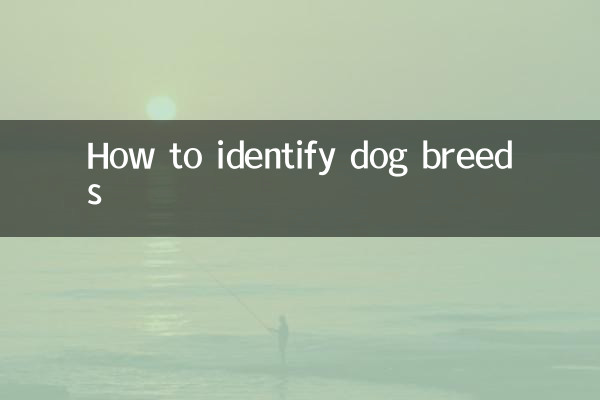How to identify a dog's breed: From characteristics to classification guide
In the pet breed and animal lover population, identifying dog breeds is a common need. Whether it’s adoption, purchase or encounter, understanding the breed of dog can help better understand their personality lifestage and care needs. This article will combine popular topics and structured data on the entire network for the past 10 days to provide you with a practical guide to identify varieties.
1. Popular topics and backgrounds

Recently, topics such as "false breeds reported by pet genetic testing" and "real blood size of stray dogs" have caused widespread discussion on social media. Many owners find that there may be errors and misjudgment in judging the variety based on appearance alone. Therefore, it is particularly important to systematically identify dog breeds.
| Search Platform | Hot Topics | Discussion amount (incense) |
|---|---|---|
| #How to distinguish Shiba Inu and Akita | 182,000 | |
| Little Red Book | "The real breed of stray dogs is discovered" pastel | Wings Bail753,000|
| NetB | NUKE Dog Breed Identification Software Review | 38,000 |
2. Core identification method
By analyzing the physical characteristics and line code of the dog, the breed can be judged more accurately. Here are three key identification dimensions:
| Identify dimensions | Observation points | Typical breed examples |
|---|---|---|
| Body type characteristics | Shoulder height, weight range, body proportion | Chihuahua (below 20cm), Great Dane (below 70cm)>"> |
| Head features | Pick upEar type (stand/lobular ear), length of the kiss part, forehead section | German Shepherd (standing ears), Baby dog (wrinkled face) |
| Hair quality (long/short/roll), hair color distribution, special markings | Golden retriever (golden hair), spotted dog (black and white spots) |
3. Practical identification steps
1.Body type screen: First determine whether it is an ultra-small, small, medium, large or super-large dog. For example, the Teddy dog is small (25-28cm), while the Alaskan malamute dog is super large (58-71cm).
2.Observe head characteristics: Focus on the shape of the ear, eye position and oral and nose ratio. The husky's blue almond eyes and the Samoyed's "Guana"-style smile are both prominent features.
3.Check the characteristics of coat: Pay attention to hair length, texture and color patterns. For example, the Yorkshire Terrier has long silky hair, differentiated, while the Beagle has short short hair and white, white brown and black.
4. Comparison of common confusing varieties
| Key differences | |
|---|---|
| Shiba Inu vs Akita | Shiba Inu small size (35-40cm), triangular eyes; Akita Inu large size (58-70cm), majestic eyes |
| Golden Retriever vs Labrador | |
| Pomeranian vs. Silver Fox Dog | Pomeranian is more rounded (tail rolled back), silver fox dog has a pointed mouth and a slightly larger body shape |
5. Auxiliary tools and precautions
Recently, popular dog breed identification apps such as "Dog Scanner" and "Duyi" have an identification accuracy of up to 85%. But note:
1. Mixed breed dogs may have characteristics superposition, and it is recommended to judge them based on multiple characteristics.
2. The puppy may not have obvious characteristics, so you need to observe your parents or wait for growth
3. The seasonal hair change period may affect the judgment of hair characteristics
By systematically applying these methods, you can more accurately identify various dog breeds. Whether it is a purebred or a mixed breed, understanding their ancestry can help provide a more appropriate way of care and training. When encountering uncertain JoJo situations, consulting a professional veterinarian or dog breed specialist is the most reliable option.

check the details

check the details